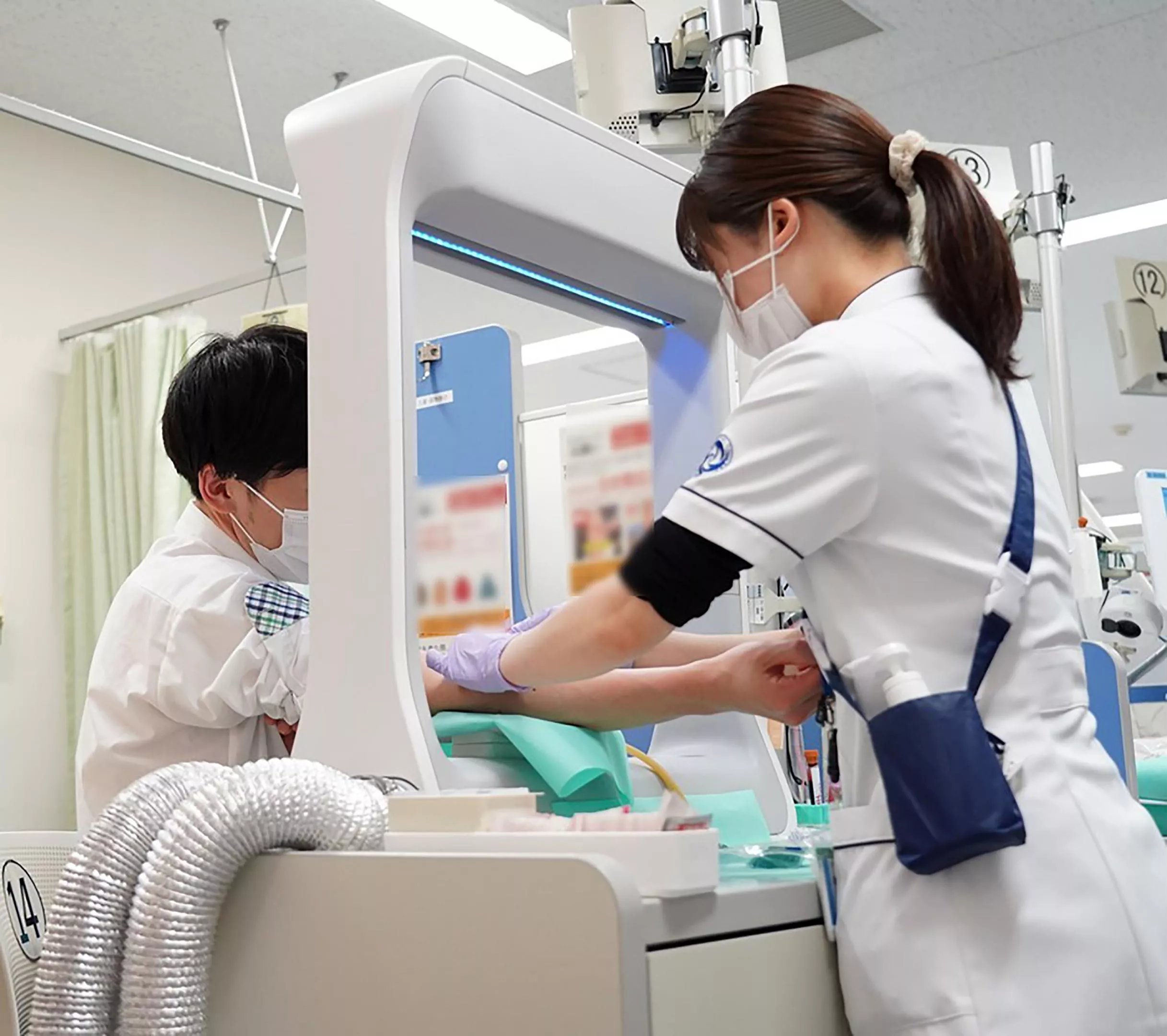In order to prevent the spread of covid-19, miniaturized air curtain for hospital wards, laboratories and other health care places is becoming more and more popular. It is a practical solution for inappropriate mask wearing or when social distance is not a realistic choice. Japanese researchers have developed a desktop air curtain system (DACS) that blocks all incoming aerosol particles, as described by AIP publishing in a new article in AIP progress.

"We envisage that this system will effectively act as an indirect barrier for blood test laboratories, hospital wards and other situations where sufficient physical distance cannot be maintained, such as at the reception counter," said co-author Kotaro takamure
An air curtain, sometimes called an air door, is a fan powered ventilation system that forms an air seal at the entrance. They are used in hospitals to prevent ambulance smoke and other pollutants from entering the emergency room.
One challenge in developing smaller air curtains is to completely block the emitted aerosol particles over time, because it is difficult to maintain the air wall over long distances. As a result, these devices gradually lose the intensity of air emission and form turbulence, which makes the infected aerosol particles escape to the surrounding environment.
DACs includes a discharge and suction port to help solve this problem. The generator at the top of the DACs generates air flow, which is directed to the suction port at the bottom of the equipment. This prevents the airflow from dispersing, causing all aerosol particles to be collected at the suction port. A HEPA filter can be installed in the suction port for air purification.
Researchers are developing a complete virus inactivation system, which is equipped with ultraviolet light and connected to the suction port. After ultraviolet disinfection, the air is recirculated to maintain the airflow of the air curtain and the air pressure of the room.
The researchers tested their equipment by simulating breathing using an air compressor connected to a manikin. Dioctyl sebacate is a widely used solvent, which is very easy to diffuse. It is added to the gas flow to produce aerosol particles. Particle image velocimetry and high-speed camera are used to determine the blocking effect of DACs. Aerosol particles close to DACs suddenly bend towards the suction port, which means that the air curtain completely blocks all incoming aerosol particles. The researchers found that the air flow above the DACs would be destroyed by the simulation of the human arm. However, aerosol blocking performance remains unaffected.
Nagoya University Hospital conducted DACs tests on patients during blood collection. Researchers are studying lowering the suction port so that the arm can be placed under the heart for proper blood collection.